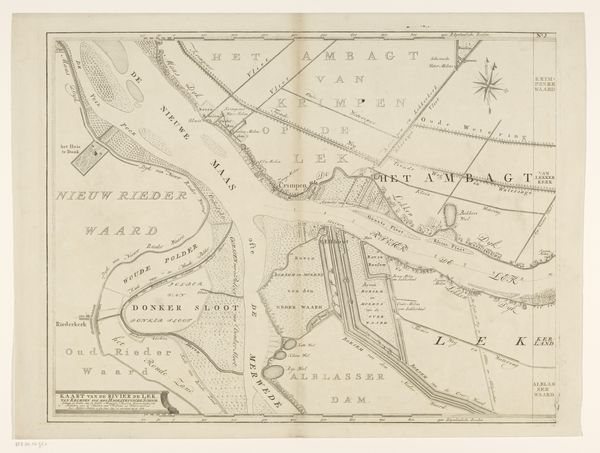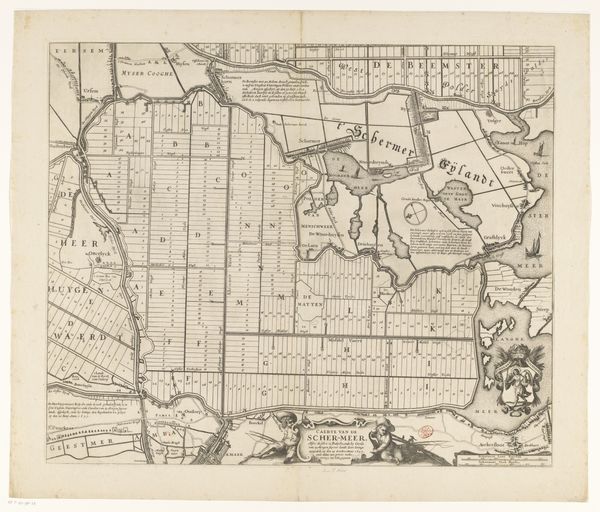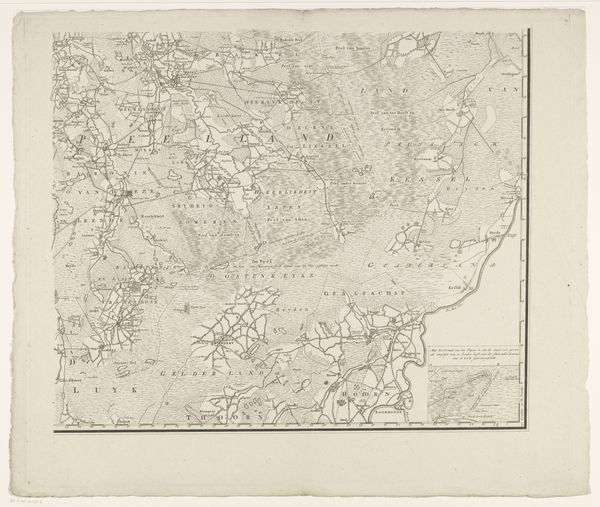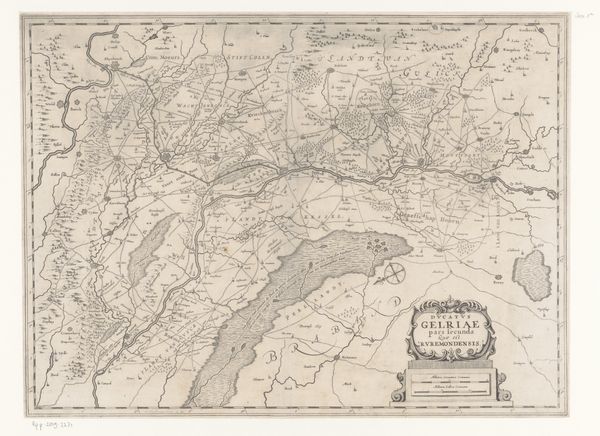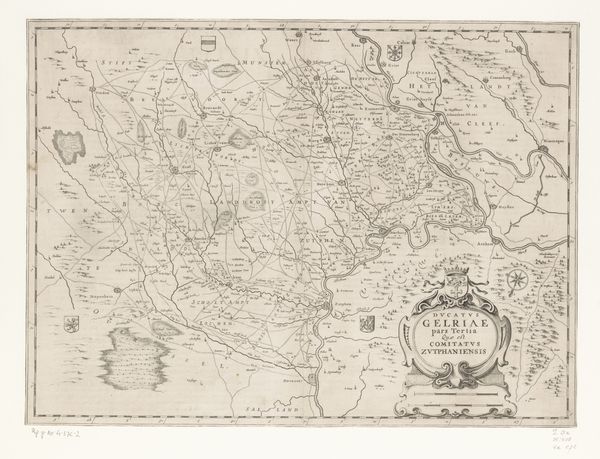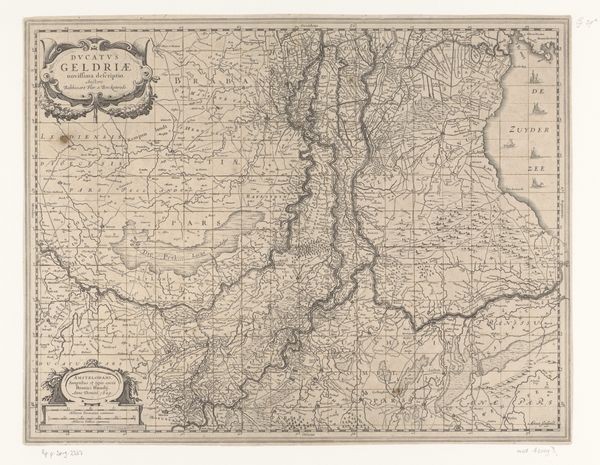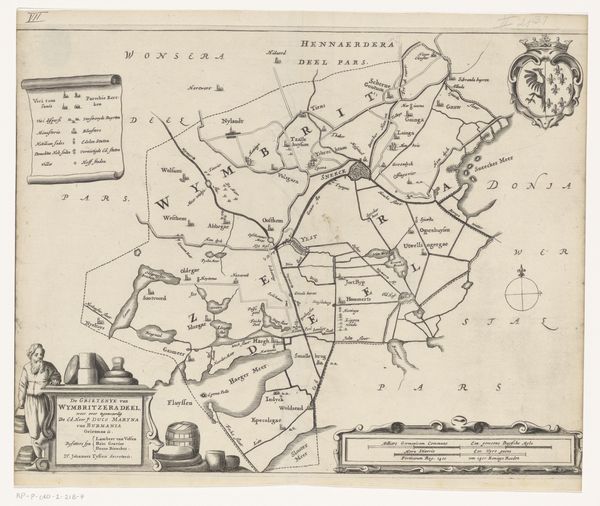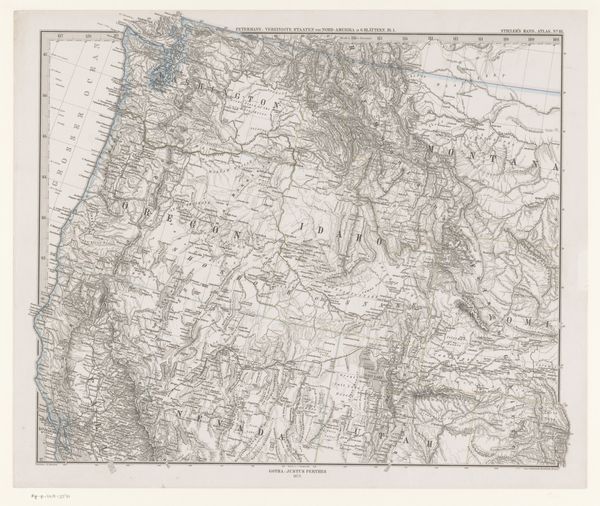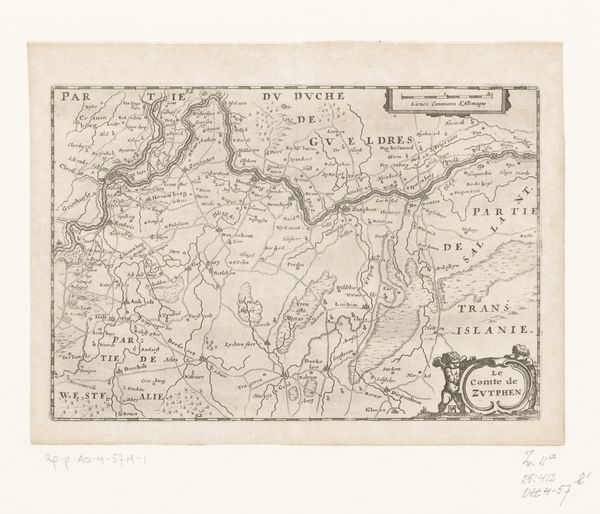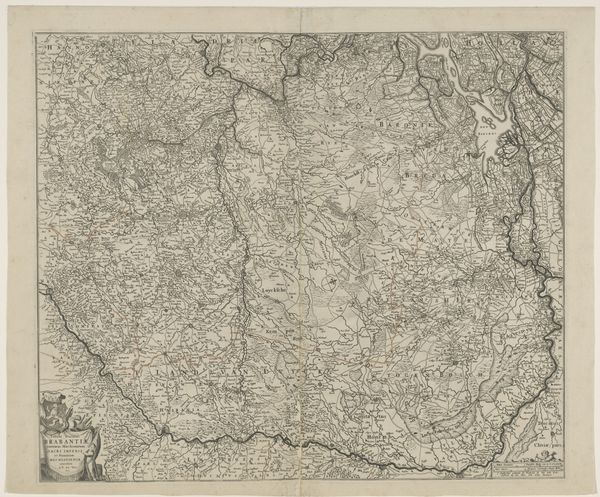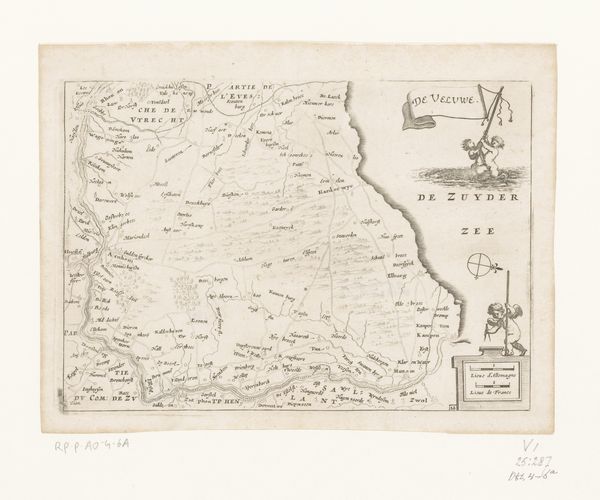
Kaart van het Hoogheemraadschap van de Krimpenerwaard (eerste deel van kaart) 1683 - 1755
0:00
0:00
johannesleupenius
Rijksmuseum
drawing, ink, pen
#
drawing
#
dutch-golden-age
#
pen sketch
#
old engraving style
#
landscape
#
ink
#
geometric
#
pen
Dimensions: height 439 mm, width 530 mm
Copyright: Rijks Museum: Open Domain
Editor: Here we have a section of "Kaart van het Hoogheemraadschap van de Krimpenerwaard," a map created between 1683 and 1755 by Johannes Leupenius, using pen and ink. The level of detail is striking. How do we read a work like this beyond just geographical data? Curator: That's a great question. Consider the role of cartography in the Dutch Golden Age. Maps weren't just about navigation; they were assertions of power, economic drivers, and reflections of national identity. The Krimpenerwaard was a vital agricultural region, so mapping it served specific socio-political needs. What does its detail suggest to you about the community's relationship to the land? Editor: It looks like a highly organized system with clearly defined boundaries. Maybe land ownership was meticulously recorded, reflecting the economic importance of agriculture. Curator: Exactly! These maps aided in land management, water control—critical in the lowlands—and taxation. How might such a detailed, seemingly objective representation actually shape perceptions and control access to resources? Editor: I suppose it creates a visual hierarchy. Those who controlled the mapping process could influence who had access and power within the region. It almost normalizes a certain power dynamic through seemingly neutral representation. Curator: Precisely. And note the visual style, invoking classicism and scientific accuracy, both highly valued during the period. This imbued the map with authority, shaping its reception. Do you think this adds a layer to its impact? Editor: Definitely. The artistic rendering elevates its perceived trustworthiness, almost as propaganda for an existing social structure, subtly reinforcing it. It's like the art serves power in plain sight! Curator: Precisely! By historicizing something as functional as a map we've discovered some deeper meanings within its construction. Editor: It's been helpful to explore the cultural forces interwoven with practical needs of early map making.
Comments
No comments
Be the first to comment and join the conversation on the ultimate creative platform.
